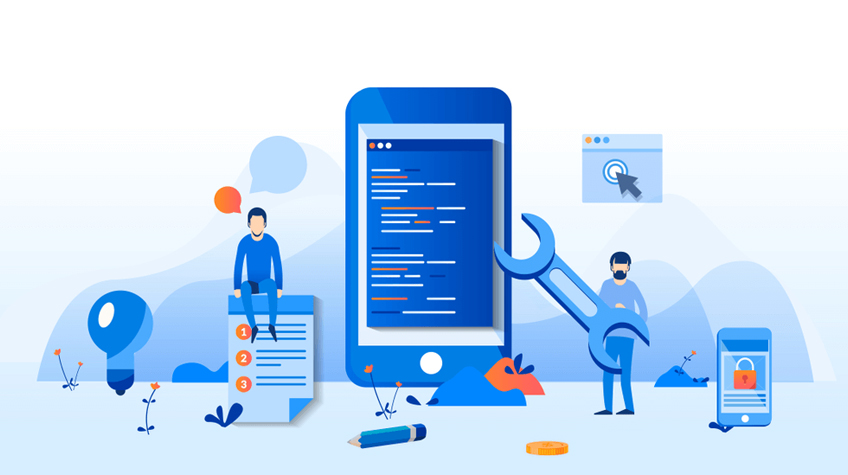
Without any doubt, app development is one of the most fast-paced and promising industries. No wonder why so many young people want to enter it. Some students take an interest in mastering this art to build a successful career; others do this to be able to implement their ideas to life, whereas some may want to do this to give a head start to their own startups.
Regardless of the reasons, the good news is that anyone can master application development these days!
You can follow a traditional path and pick a relevant college major, study for three-or-so years, and get a degree that will let you build a career in this field. Also, if you are already in a different major, you can opt for online courses and acquire knowledge and skills in app development.
With a trusted academic assistant like EssayPro, you can easily combine it with your college studies without risking your academic performance. Yet, whatever path you choose, making your first steps in app development, you will inevitably face a whole spectrum of challenges and questions.
One such question is which mobile operating system to build your apps for. The choice is difficult, but we have you covered. In this article, we will tell you how to select the right platform for your application. Let’s dive in!
iOS and Android: The Two Market Leaders
In order to pick the best platform for your future app, it’s crucial to consider a wide range of factors, which we are going to discuss further. But, first, it is important that you clearly see the options that are out there.
Just a few years ago, the market was full of various mobile operating systems such as Symbian, Microsoft, Android, RIM, iOS, and quite a few other smaller platforms. At that point, it seemed to many that the market would keep expanding, creating more and more options for developers. But in reality, it didn’t.
The truth is that today’s market basically involves two major operating systems – iOS and Android. Together, these platforms represent 99% of the entire market share. These are the undoubted leaders. So, if you will be choosing a platform for your app, most likely, you will want to stop your choice on one of these options.
But, how to select the right one? Let’s move on and look at the core factors you’ll have to consider!
Geography
When you decide to launch an application, you should have a very clear understanding of who it is meant for. In other words, you need to know what your target audience looks like. And the earlier you define it, the better.
You may not know this yet, but different platforms actually cater to different target audiences. First of all, this spans the geography of your audience. According to global statistics, iOS only takes 13% of the overall market share, whereas Android holds the remaining 87%.
But, their shares are in different regions. Thus, iOS dominates in the US, Australia, Canada, Western Europe, and Japan. Android, on the other hand, dominates in India, China, Africa, Central and South America, Eastern Europe, the Middle East, and some other regions.
The takeaway is pretty simple – to choose the best platform for your app, you should pick the one that is the most popular in your target market.
Design
Another thing worth keeping in mind is that the design of apps created for iOS and Android is supposed to follow different guidelines.
Android app developers typically follow Google’s Material Design Guidelines. This set of rules and recommendations is considered to be stricter than the one provided by Apple. It specifies icon spaces and table sizes. Also, it provides recommendations concerning colour palette, etc.
To build an app for iOS, developers should refer to Apple’s Human Interface Guidelines. Generally, these guidelines are believed to give more freedom to developers. According to specialists, Apple doesn’t dictate any specific rules. Instead, it delivers recommendations that can help you achieve a more intuitive and user-friendly design.
In addition, there are certain differences in the ways iOS and Android see navigation, animation, typography, buttons, and other design elements inside their apps. Be sure to carefully study the core distinctive features to see what platform fits you best. This is a pivotal factor to consider because the design is an integral part of the app development process.
Budget
The next factor beginner developers should consider before selecting a particular platform for their apps is the budget. This is especially crucial for student developers who might be tight on a budget.
There is a common belief that building apps for iOS is cheaper. However, experts claim that this is not quite true.
The truth is that the platform you pick for your future app, as well as the programming language that you decide to use, has a tiny influence on the final cost. Instead, what really affects the price is the design and the features that you want to integrate into your app.
Nevertheless, there is one more thing worth saying at this point. Let’s not forget that you can choose a cross-platform solution instead of building an app specifically for iOS or Android. In many cases, cross-platform development will enable you to reduce the budget.
But, in any case, remember that it’s impossible to determine the final cost without making careful calculations for your specific project. So, don’t choose a platform based solely on the budget matters.
Return on Investment
Lastly and most importantly, the selection of the right platform for your future application should also depend on the ROI each particular OS can offer. After all, the ultimate goal of every app is to generate revenue.
In terms of revenue generation, it is worth noting that it works slightly differently for iOS and Android. According to market studies, iOS users are more likely to purchase applications. Moreover, on average, they spend three times more on their apps than Android users.
If you open Google Play, you will see that the biggest share of apps available there are free to download. Due to this reason, Android users don’t really enjoy buying apps. But instead, they can make in-app purchases or pay to receive access to a full set of application features.
In the App Store, on the contrary, many apps initially come at some cost, and users are okay with paying for them. And as for in-app purchases, iOS users are more likely to pay for removing ads or premium subscriptions.
The Bottom Line
Now you know about the key things to pay attention to and keep in mind when selecting the right platform for your app. But, what specific option should you choose? We don’t mean to disappoint you but giving a specific, one-fits-all answer is simply impossible.
After reading this article, you should see how distinct different platforms are. Each has certain specifics, pros, and cons. Yet, there is no “better” or “worse” option. Eventually, it all gets down to the specifics and needs of your project, as well as your personal preferences. If you base the selection of the platform on these factors, you will never make the wrong choice. And now, you know everything you need to make an informed and wise decision!






